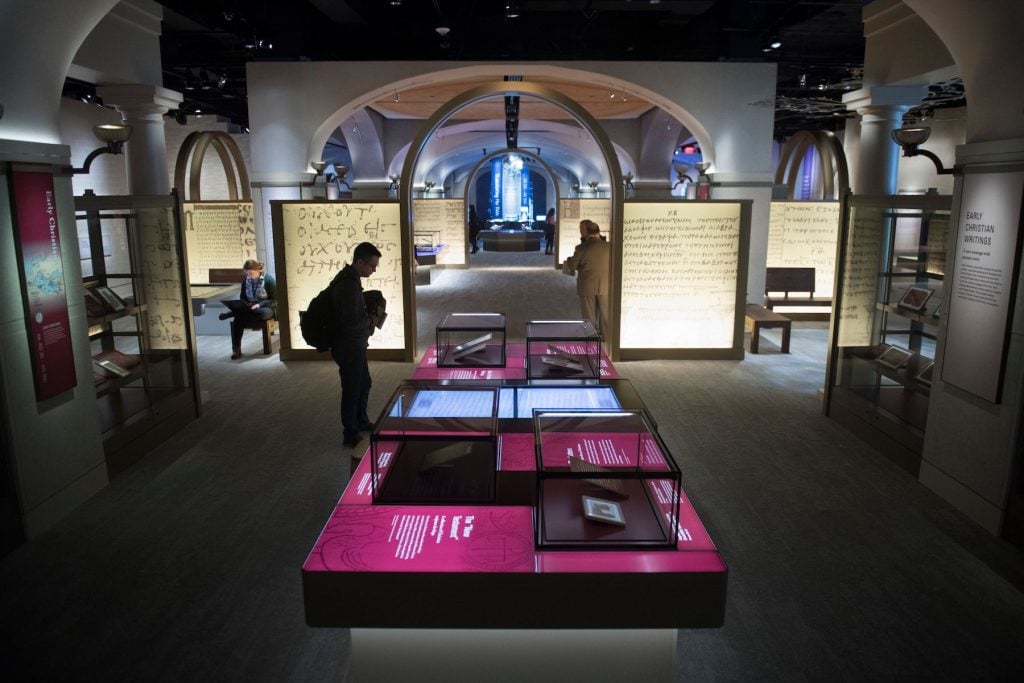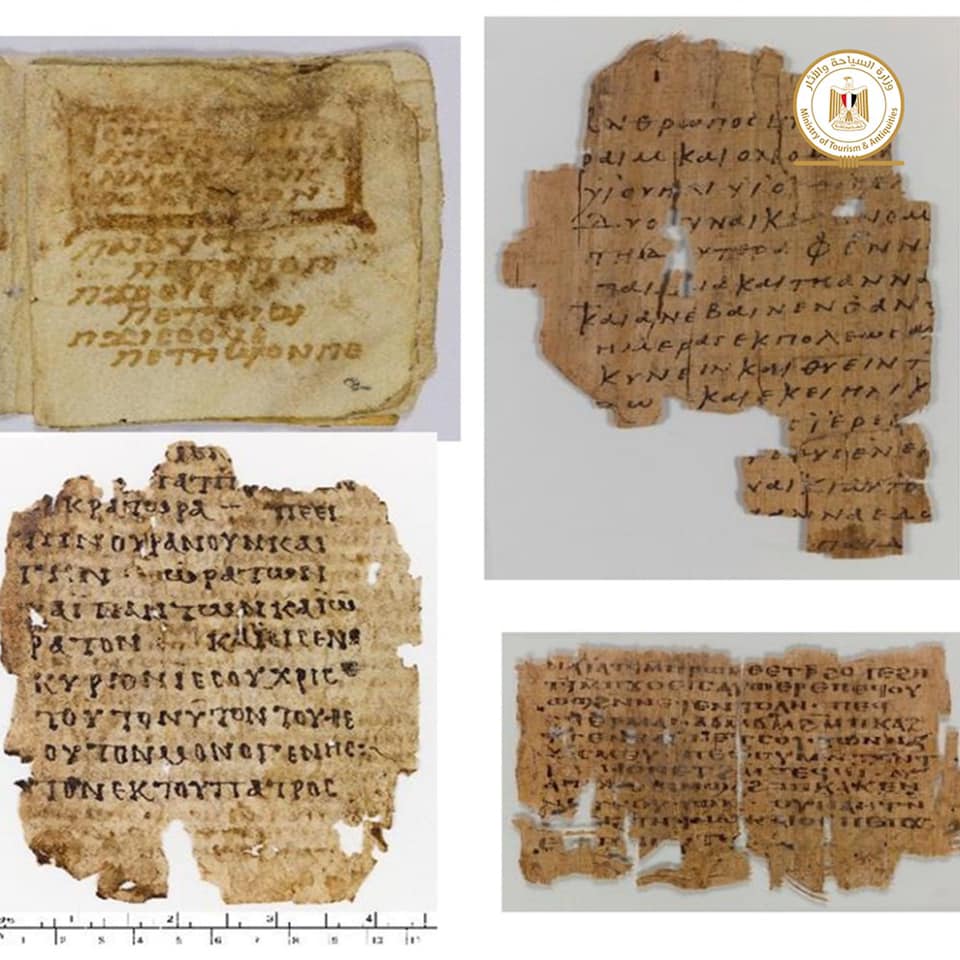Law & Politics
The Museum of the Bible Must Once Again Return Artifacts, This Time an Entire Warehouse of 5,000 Egyptian Objects
The man behind the DC institution has admitted his collecting "naiveté."

The man behind the DC institution has admitted his collecting "naiveté."

Caroline Goldstein

The Museum of the Bible in Washington, DC has returned some 5,000 artifacts to the Egyptian government, after years of talks between agencies including the Department of Homeland Security and the Egyptian Ministry of Tourism and Antiquities.
The objects have been held at the Museum since its opening in 2016. Egypt has been seeking repatriation of the objects, which it says were smuggled illegally out of the country, for just as long.
The objects include funerary masks; fragments of coffins; a set of portraits of the dead; heads of stone statues; manuscripts of Christian prayers written in both Arabic and Coptic, and just Arabic; and pieces of papyrus with text in Coptic and Greek, as well as hieratic and demotic script. The pieces will be displayed in Cairo’s Coptic Museum.
According to Hisham Al Laithi, who heads the country’s antiquities registration center, the objects were not taken from Egyptian warehouses or museums. Instead they were smuggled after being illegally excavated.

Artifacts returned to Egypt from the Museum of the Bible. Photo: Egyptian Ministry of Tourism and Antiquities.
The Museum has been plagued by issues of suspicious and incomplete provenance and has returned thousands of artifacts to Iraq and Egypt since opening in 2017. Founder and board chairman Steve Green is also the president of Hobby Lobby craft stores, and has a personal collection valued at $30 million, which he began amassing in 2009.
In 2015, the Green family was investigated for importing looted clay tablets from Israel, which were shipped in 2011 to Oklahoma City, where Hobby Lobby is headquartered, with plans to be displayed at the museum when it opened. The shipment was labeled as “tile samples.” Despite the fact that the museum maintained that clerical and paperwork errors were to blame, Hobby Lobby returned more than 5,000 artifacts smuggled from Iraq and paid a $3 million fine.
In 2018, the Museum acknowledged that fragments in its Dead Sea Scrolls collection showed “characteristics inconsistent with ancient origin” after undergoing x-ray and other testing. The museum removed five of the objects, and noted that it would continue to engage researchers to verify contested artifacts. In March 2020, it was announced that all 16 fragments in the museum’s Dead Sea Scrolls were fake. The museum has also returned 13 ancient bible fragments accused of being stolen from the Egypt Exploration Society at Oxford University by a professor in the department.
The onslaught of bad publicity stemming from Green’s dubious collecting practices has prompted him to issue statements both about his naiveté in the early years of his acquisitions, and in the museum’s efforts to return property to their countries of origin. “The criticism of the museum resulting from my mistakes was justified,” he told the Wall Street Journal.
In a statement on the museum’s website posted this week, Green detailed the process of returning the 5,500 papyri fragments and other Egyptian artifacts, writing that on January 7, “we transferred control of the fine art storage facility that housed the 5,000 Egyptian items to the U.S. government as part of a voluntary administrative process. We understand the U.S. government has now delivered the papyri to Egyptian officials.”
The statement also announced that on January 27, the museum initiated a shipment of more than 8,000 clay objects to Baghdad’s Iraq Museum.